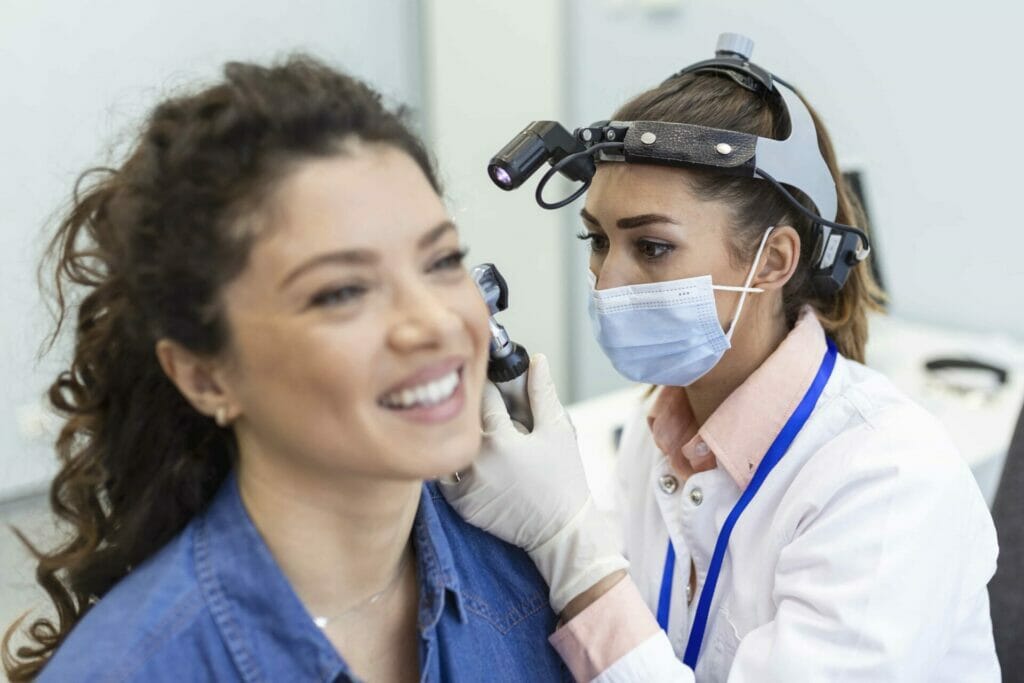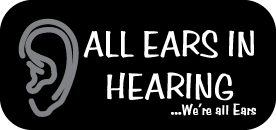Hearing Test

A hearing test is a simple and easy way to determine if you have any hearing loss. It’s a painless test that takes just a few minutes and can be done in a hearing clinic.
A hearing test can detect if you have any hearing loss, what type of hearing loss you have, and how severe it is. This can help you identify if you have a hearing issue early enough that it may be reversible.
A good ear examination can also screen for other illnesses such as infections, and even hypertension which is the main cause of preventable adult-onset deafness.
Knowing this information is important because it can help you get the right treatment and support.
Overall, it is important to get regular hearing check-ups to make sure your hearing health is where it should be. Not only will this help keep your hearing is in optimum condition, but it can also help you maintain a healthy lifestyle!
Identifying Hearing Loss
In general, hearing loss is a powerful predictor of cognitive impairment and more broadly physical health. Hearing capacity can be linked to memory loss, dementia, and other cognitive issues. In addition, hearing loss impairs communication skills that range from more obvious difficulties such as difficulty understanding conversations in noisy restaurants or grocery stores to the inability to understand verbal instructions. This has a significant impact on socialisation, work, and safety.

Type of Hearing Loss
Here are some of the most common types of hearing loss:
Sensorineural Hearing Loss – This is the most common type of hearing loss, accounting for around 90% of all cases. Sensorineural hearing loss is caused by damage to the inner ear or the nerve pathways that send sound signals to the brain. This type of hearing loss can be gradual or sudden, and it often affects high-frequency sounds.
Conductive Hearing Loss – This type of hearing loss is caused by a problem with the outer or middle ear, such as an obstruction in the ear canal, fluid behind the eardrum, or damage to the eardrum itself. Conductive hearing losses can often be treated with surgery or medical procedures.
Mixed Hearing Loss – This type of hearing loss is a combination of sensorineural and conductive hearing loss.
Unilateral Hearing Loss – This type of hearing loss occurs when one ear has a greater degree of hearing loss than the other.
Central Auditory Processing Disorder – This is a disorder that affects the way the brain interprets sound signals. For people with this condition, the ear works fine, but the problem is in how the brain decodes sounds.
These types of hearing loss may be temporary or long-term depending on the cause and severity. To have a complete understanding of your hearing health, you need to have a professional ear exam from an audiologist.
Diagnosing Hearing Loss
Your family doctor can refer you to an audiologist for a full hearing examination. With this test, your audiologist will closely examine your ears to see if they can detect any problems or abnormalities. They will also test your hearing, including your ability to hear in a noisy environment.
The audiologist may recommend further tests, such as a CT scan of the ear canal and middle ear. This helps determine if any other conditions are contributing to the hearing loss, such as a tumor or an infection.
Signs that you might need a hearing test.
One of the best ways to ensure your hearing health is by routinely having a hearing test. This will help uncover any underlying hearing issues and allow you and your doctor to develop a treatment plan if necessary. Here are a few critical questions to ask yourself when thinking about testing for hearing loss:
- Do you find yourself asking people to repeat themselves?
- Do you find it increasingly difficult to follow conversations in crowded rooms?
- Do you struggle to hear the television or radio at a normal volume?
- Do you have ringing, roaring, or clicking sounds in one or both ears?
- Have your family members reported that you don’t hear as well as before?
If these questions sound familiar to you, it might be time to book an appointment with your hearing care professional in your local area!
What do you need to know about Hearing Tests?
There are a few different types of hearing tests that you can have done to determine if you might need a hearing treatment plan. We will just cover the most common type are as follows.
Full Diagnostic Test
A pure tone audiogram is a thorough hearing check-up that measures the loudness and clarity of sounds in each ear at many frequencies. An audiologist will use an audiogram to diagnose your loss, create your individualized treatment plan, and determine the strength of any hearing aid or cochlear implant device you need.
Tympanometry Test
Another type of test is a tympanometry test. Tympanometry uses sound waves to measure how well your eardrum moves and conducts sound, as well as how much pressure is inside your ear. An audiologist will take this information into account when recommending solutions.
Speech Discrimination Test
Speech Discrimination Test is a hearing check-up in which you will be asked to repeat words and sentences that the audiologist reads out loud. This helps your doctor determine how much difficulty you may have understanding speech in certain situations. This can also help your doctor differentiate between a language and hearing problem.
There are many important reasons to get a hearing test, from ensuring your cognitive health to improving your communication skills. These types of tests are crucial for determining what might be causing your hearing loss. Without a proper diagnosis, it can be difficult to get the right support for your health!

What happens after a hearing assessment?
After your hearing assessment, the audiologist will go over the results and recommend a treatment plan if necessary (assuming you have a hearing problem). They will identify the type of hearing loss and what pre-cautionary treatments may help to avoid any potential progression. Depending on the severity of your hearing loss, you might need a combination of hearing aids and other solutions.
A typical hearing treatment plan might involve:
- Consider getting hearing aids
- Making lifestyle changes to reduce the risk of future loss.
- In some cases, a combination of both.
Hearing loss might not be something you think about every day, but it can have a huge effect on your life! You should make sure to take proper care of your ears and book an appointment with your hearing care professional over time to ensure that you’re getting the right support for your health. Otherwise, hearing aids could be your best solution.
With the right testing, diagnostics, and treatment plan you can make sure that your ears are getting the care they need to stay healthy!
Hearing Loss Prevention Tips
In addition to getting a hearing check-up, there are a few things you can do to help prevent hearing loss:
- Avoid loud noises whenever possible. This includes listening to music or watching television at high volumes and using power tools without ear protection.
- If you are exposed to loud noises regularly, take breaks to give your ears a rest.
- Hearing protection e.g wearing earplugs or earmuffs will protect you from exposure to loud noises.
- Keep the volume on your cell phone, computer, and other electronic devices at a safe level.
- If you are experiencing any symptoms of hearing loss, such as tinnitus (ringing in the ears) or muffled hearing, see an audiologist as soon as possible.
If you have hearing problems or you’re having a hard time understanding conversations, focusing in noisy places, or keeping up with the speed at which people are talking, it might be time to book a hearing test. Hearing health is one of the most important aspects of having a healthy lifestyle, so make sure to take care of your ears!
Why is maintaining a healthy hearing level important?
Following the advice above will go a long way to ensuring you’re getting the right support for your health. This could eliminate or prevent any hearing problems. However, there are also some things that you’re already doing on a regular basis that can affect how well you hear and how quickly you lose your hearing.
One of the biggest reasons to keep up with your hearing health is because many common activities can damage it! The longer you wait to treat possible hearing loss, the greater the damage will be. And once that damage occurs, it can be very difficult, and sometimes impossible to repair.
Noise-induced hearing loss is one of the most common types of permanent hearing loss. Loud noises, whether they’re from a concert, firearms, listening to loud music, or even power tools can cause damage to the delicate cells in your inner ear.
Many people think that if they don’t have any symptoms, their hearing is fine, and they don’t need to see a doctor-but this couldn’t be further from the truth! It’s important to know your hearing levels and get them tested to make sure you’re getting the right support for your health.
DISCLAIMER:
The information on this website is provided for educational purposes only. We do not support, nor recommend any products or treatments without proper hearing diagnostic and proper hearing evaluation. All users must seek professional advice before beginning treatment as well as inform themselves of known side effects/risks associated with said procedure(s).
Read more with similar topics below
Of our 5 senses, hearing is probably the most important for our feeling of connection to the world around us. It allows us to communicate with friends and family, enjoy the sounds around us like music or nature and helps keep us safe by alerting us to warning signals, the various sounds in traffic and other forms of danger. To properly understand how we conduct a hearing test, it is best to understand how the ear works.
All Ears in Hearing can assess hearing for both children (from age 3) and adults. No referral is necessary and rebates may be available from your private health fund. A Medicare rebate is only available for General Practitioner Referrals through the Chronic Disease Management program or with a referral from an Ear Nose and Throat Specialist or a Neurologist.
